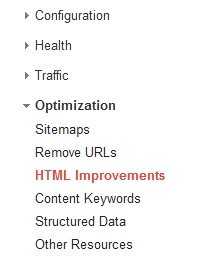3 Simple Strategies for Ecommerce SEO
Almost all ecommerce websites are conceptually similar. They typically all have varying levels of product categories, sub-categories, product pages, shopping carts and checkout processes. Although there are always unique qualities, the strategies for ecommerce SEO are relatively consistent for most e-retailers.
 In this blog post, we share some of the most fundamental strategies for ecommerce SEO. Understanding these essential aspects of search engine optimization can help you prioritize your efforts better rankings.
In this blog post, we share some of the most fundamental strategies for ecommerce SEO. Understanding these essential aspects of search engine optimization can help you prioritize your efforts better rankings.
1. Deep Linking is Ideal
Link building is still a significant practice of SEO. However, instead of building links directly to the homepage from external sources, you should be focusing most of your efforts on deep linking to your product pages and product category pages.
This obviously requires a lot more diligence to stay organized. Additionally, you’ll need to know which products are on the top of your SEO list as well as the anchor text (or keyword target) of link for each product. Category pages and individual product pages are the bread and butter for ecommerce SEO. Be sure that most of your link building efforts are deep to these important pages.
2. Product Page Optimization
Like we mentioned above, product pages are major focus for SEO. These webpages have unique, conversion-oriented content that is usually keyword optimized for highly specific, long-tail phrases. Take the time to address all product pages of your ecommerce site.
To help you in this potentially massive SEO project, below are some solid tips to keep top of mind:
- Always determine the exact keyword target (or search query) per product page. This is achieved by doing keyword research.
- Make sure that the optimized page text or copy can be crawled and indexed by search engine spiders (and is not a part of an image.)
- Make use of videos and images to facilitate sales.
- Provide unbiased or user-generated reviews on product pages.
- Use various headers and text styling elements like strong tags, italics, and underlining through each page’s content.
- Include primary product features, USP’s, and specifications to improve product page’s conversion potential.
3. Check for Duplicate Content
 Ecommerce sites are sometimes super deep with thousands of webpages. This can often cause issues concerned with duplicate content on the website (which is particularly common with content management system (CMS) software.) To check for duplicate content on your website, visit your Google Webmaster Tools account. Under the “Optimization” option in the right hand navigation, select “HTML Improvements.”
Ecommerce sites are sometimes super deep with thousands of webpages. This can often cause issues concerned with duplicate content on the website (which is particularly common with content management system (CMS) software.) To check for duplicate content on your website, visit your Google Webmaster Tools account. Under the “Optimization” option in the right hand navigation, select “HTML Improvements.”
Under HTML Improvements in Google Webmaster Tools, you can pinpoints on-site weaknesses of your ecommerce store. Here can see URLs of your website that duplicate Meta descriptions and page titles. This information can help determine which pages of the site you’ll need to correct with unique content, or simply add to your ‘robots.txt’ file to ensure the page(s) does not get crawled and indexed.
Acknowledging issues with duplicate content can be momentous for ecommerce SEO, especially if the key product pages are the culprit. There many other tools you can use to help pinpoint these problems, however Google Webmaster Tools is easy and free to use.
There’s your 3 simple strategies for ecommerce SEO. If you’re interested in learning more, visit ClickCentric SEO for articles, strategy consulting, and ecommerce SEO services.
This article written by Tyler Tafelsky, one of our SEO & Website Optimization Specialists here at Web Presence Group.
Visit Tyler on Google+



